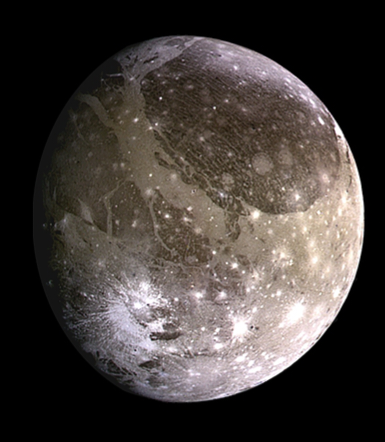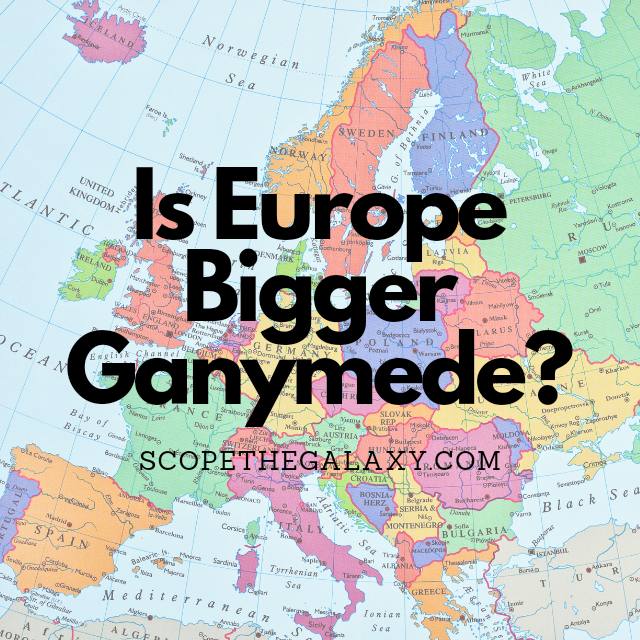*This post may contain affiliate links. This means we may make a commission if you purchase an item using one of our links*
Europe is the second smallest continent on Earth, whilst Ganymede is the largest moon in our solar system. Still, there’s no comparison regarding which one is bigger as the former is a flat land mass with a surface area of 10.53 million square kilometers and a volume of 420 million cubic kilometers while Ganymede is a spherical body with a surface area of 87.2 million square kilometers and a volume of 76.6 billion cubic kilometers.
For a more detailed look at what makes Europe and Ganymede as big as they are, continue reading as it will be covered in more detail below.
How Big Is Europe?

Europe is technically considered the second smallest continent in the world, only beaten by Australia. Europe comprises the far west projecting peninsula of Eurasia, a landmass it shares with Asia, and the small continent makes up 2% of the earth’s surface.
Europe’s territory can be tricky to pinpoint. But we will do our best to explain it for you; the Artic ocean borders its to its North and the Atlantic Ocean lies to its West. To the South lies the Mediterranean and Black seas, the Kuma Manych Depression, the Caspian sea, the Ural mountains, and the Zhem River divide it from Asia.
From north to south, Europe covers an area of 3,341 kilometers and spreads approximately 2,154 from east to west. However, because it is an irregular shape, these measurements, when totaling the circumference to find out the land mass, you end up with a greater number; Europe covers a total landmass of 10.53 million square km.
Europe’s coastline is full of seas, fjords, and bays and runs for approximately 38,000 km. It has several islands, including Iceland, Ireland, the British Isles, Sardinia, Malta, Crete, and Cyprus.
As Europe is a continent, it comprises various countries, each with its borders. Some of the largest countries in Europe and their landmasses include France, with 547,030 square kilometers; Sweden, with 449,964 square kilometers, Ukraine, with 603,700 square kilometers; and Poland, with 312,685 square kilometers.
As a result it overall volume if say the average crust across all of the countries present within in it were to 40km, would be 420 million cubic kilometers.
How Big Is Ganymede?

Ganymede is the largest moon of Jupiter and the largest object in our solar system not to be properly classified as a planet. It is the only moon with a magnetic field of its own, and one of the few bodies in our solar system known to possess a magnetosphere.
Ganymede has a diameter of 5,262 km and a surface area of 87,200,000 sq. km. Its surface area is far vaster because the moon is spherical rather than flat. This gives it an impressive volume of 76,600,000,000 cubic km.
This moon is a source of fascination for scientists, with Hubble observations suggesting it may possess an underground ocean. Potentially, this ocean could contain more water than all the water on Earth combined with a depth of up to 100 km – ten times deeper than the oceans on Earth. This ocean is buried beneath a 150 km ice crust.
The terrain of Ganymede falls into two distinct categories: large, bright ridged regions and older, darker ground. This terrain pattern suggests the moon could have been under significant tension from global tectonic processes.
Galileo Galilei first discovered the moon in January 1610; significant because it was the first time scientists observed an object orbiting a planet other than Earth. And this helped us recognize that the Sun lies at the center of our Universe rather than the Earth.
Ganymede formed from leftover gas and dust that remained after Jupiter’s formation, which means that it is roughly the same age as our solar system – 4.5 billion years old.
Three main layers comprise Ganymede; a metallic core, a surrounding mantle of rock, and a top layer of ice. Computer models simulating Ganymede’s makeup show that more ice and oceans could be sandwiched between these main layers. The Hubble Space Telescope also discovered that the moon might have a thin atmosphere of oxygen.
Ganymede is the seventh moon from Jupiter, which orbits at around 1.070 million kilometers away from its planet. This means that Ganymede takes roughly seven Earth days to orbit its planet. While Ganymede is vast – larger than the planet Mercury – it only possesses half the mass of our closest planet to the Sun, classifying it as a low-density object.
Summary
Europe is the 2nd smallest contient while Ganymede is the largest moon in our entire solar system, coming in with numbers even larger than the smallest official planet in our solar system, Mercury.
Ganymede’s surface area is aound 8.5 times that of Europe and has a cubic volume of around 180 times that of Europe. This makes complete sense considering Europe is a flat land mass in comparison to Ganymede that is a spherical body.

